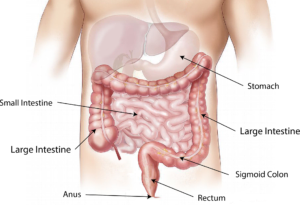Endoscopy is a minimally invasive and nonsurgical procedure used by Gastroenterologist to examine the digestive tract. The endoscope is a small, thin tube, with a light and camera attached, to view the inside of the digestive tract.
Why would you need an endoscopy?
 If you are having any type of issue with your digestive tract, such as stomach pain, gastritis, diarrhea, difficulty swallowing, ulcers, ect., your doctor may suggest this non-surgical procedure to visually examine an organ.
If you are having any type of issue with your digestive tract, such as stomach pain, gastritis, diarrhea, difficulty swallowing, ulcers, ect., your doctor may suggest this non-surgical procedure to visually examine an organ.
Your gastroenterologist may use an endoscopy to diagnose. They may use an endoscopy to collect tissue samples, or a biopsy, to test for diseases and conditions. These samples may be tested for anemia, bleeding, inflammation, cancers of the digestive systems, or diarrhea.
During an endoscopy, your doctor may treat issues such as removing a foreign object, clipping off a polyp, or widening a narrow esophagus. In certain cases, an upper endoscopy may be used in combination with an ultrasound. Some tools can be passed through the endoscope to create specialized images of the walls of your throat and stomach.
According to Medical News Today, Endoscopy is useful for investigating many systems within the human body; these areas include:
 Gastrointestinal tract: esophagus, stomach, and duodenum (esophagogastroduodenoscopy), small intestine (enteroscopy), large intestine/colon (colonoscopy, sigmoidoscopy), bile duct, rectum (rectoscopy), and anus (anoscopy).
Gastrointestinal tract: esophagus, stomach, and duodenum (esophagogastroduodenoscopy), small intestine (enteroscopy), large intestine/colon (colonoscopy, sigmoidoscopy), bile duct, rectum (rectoscopy), and anus (anoscopy).
Respiratory tract: Nose (rhinoscopy), lower respiratory tract (bronchoscopy).
Ear: Otoscopy
Urinary tract: Cystoscopy
Female reproductive tract (gynoscopy): Cervix (colposcopy), uterus (hysteroscopy), fallopian tubes (falloposcopy).
Through a small incision: Abdominal or pelvic cavity (laparoscopy), interior of a joint (arthroscopy), organs of the chest (thoracoscopy and mediastinoscopy).
Medical News Today Describes the three main reasons for carrying out an endoscopy:
Investigation: If an individual is experiencing vomiting, abdominal pain, breathing disorders, stomach ulcers, difficulty swallowing, or gastrointestinal bleeding, for example an endoscope can be used to search for a cause.
Confirmation of a diagnosis: Endoscopy can be used to carry out a biopsy to confirm a diagnosis of cancer or other diseases.
Treatment: an endoscope can be used to treat an illness directly; for instance, endoscopy can be used to cauterize (seal using heat) a bleeding vessel or remove a polyp.
Capsule Endoscopy
Instead of a thin tube, the patient swallows a vitamin sized, small capsule that has a cereal. You wear a device that will record the pictures for approximately 8 hours. As the camera travels through your digestive track it will take pictures of he esophagus, stomach, and small intestine. The doctor will review the images and get back with you with the results
Regular screening and preventative measures can put you on a healthy track for a disease-free future. Please make an appointment today to take care of your overall health. Contact Gastroenterology Consultants of Central Florida for more information and to make an appointment.
